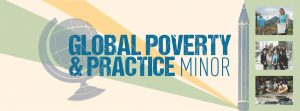Author:
Christina Gossmann
Abby Van Muijen graduated from UC Berkeley in 2012 with a major in urban design. Now she works at the Blum Center as a Visual Communication Specialist, developing a new learning tool for the Global Poverty and Practice (GPP) minor and teaching a class on visual notetaking.
 What is visual notetaking? Regardless of whether you’re putting a box around a word, improving your handwriting or sketching out entire pages, visual notetaking is all about breaking away from the conventional structure of notetaking that we’ve all fallen so helplessly into. We’re imagining alternatives to the spiral bound notebooks we all have–the ones filled with nothing but lines and lines of words that we will undoubtedly throw away at the end of the semester.
What is visual notetaking? Regardless of whether you’re putting a box around a word, improving your handwriting or sketching out entire pages, visual notetaking is all about breaking away from the conventional structure of notetaking that we’ve all fallen so helplessly into. We’re imagining alternatives to the spiral bound notebooks we all have–the ones filled with nothing but lines and lines of words that we will undoubtedly throw away at the end of the semester.
How did you start visual note-taking? I actually started visual notetaking while I was studying abroad. I was listening to guest lectures, working on projects, visiting sites and being given a lot of information, but the structure of the program made me feel like I didn’t need to remember everything. So I only wrote down the things I really wanted to remember. I would write words really bold or draw boxes around them and spent a lot of time doodling, drawing and listening. At the end of the trip, I had a sketchbook full of just the things I wanted to remember. But more than just having pages that sparked a lot of interest aesthetically, I felt like I was learning much more efficiently. I didn’t have to re-teach myself everything I had copied down in lecture anymore. I could look back at the visuals I had made and remember what I was thinking when I made them and studying felt more like reading a comic book than painfully trying to cram information into my brain.
 What is The GPP coloring book? It is a compilation of all of my visual notes from Ananya Roy’s GPP 115 course from last fall when I took the class. This fall, students have been experimenting with it as a learning tool. Half of the book provides a visual outline of the lecture material so that students can sit in lecture and focus on understanding the main concepts, rather than worry about copying down every detail. The other half of the book consists of pages designed for students to fill in their own thoughts, questions, opinions and any other details that they feel are significant–the things they want to remember. The goal of the coloring book is not to get students to start bringing crayons to class, but rather to go beyond the black and white information they are presented with and add a bit of “color” of their own.
What is The GPP coloring book? It is a compilation of all of my visual notes from Ananya Roy’s GPP 115 course from last fall when I took the class. This fall, students have been experimenting with it as a learning tool. Half of the book provides a visual outline of the lecture material so that students can sit in lecture and focus on understanding the main concepts, rather than worry about copying down every detail. The other half of the book consists of pages designed for students to fill in their own thoughts, questions, opinions and any other details that they feel are significant–the things they want to remember. The goal of the coloring book is not to get students to start bringing crayons to class, but rather to go beyond the black and white information they are presented with and add a bit of “color” of their own.
You teach a class on visual note-taking at Berkeley. Who takes this class and how do you go about teaching? I took my first drawing class my sophomore year in college. On the first day, they told us to spend 15 minutes drawing whatever we wanted. I drew a tree that looked like a stick of cotton candy with a small, slightly ill-looking stick figure that I initially intended to be myself, but out of embarrassment, put a top hat on and labeled as Abraham Lincoln. Needless to say, it was an incredibly unimpressive effort. That was two years ago. I wasn’t magically bestowed with the ability to take notes the way I do. It was something I practiced every day, and taught myself how to do. I started Visual Notetaking 101 because I realized that this is a skill that people can learn. Visual notetaking can revolutionize your entire outlook on your education, as it did for me. Seeing your thoughts and ideas and opinions come to life, even if just on paper, is empowering. Rather than feeling sleepy and confused at the end of a lecture and having gained nothing more than a headache and a few pieces of binder paper that I won’t look at until the midterm. I now walk out of lecture feeling brilliant, creative and accomplished every day, holding on to a few pages of paper that I might cry if I lost. And that’s what I came to UC Berkeley to do, to be inspired each and every day not just by my professors, but my myself and my classmates.
 How does the class work? Visual Notetaking 101 is designed so that everyone can participate. We have about 150 students from all different majors, ages, drawing abilities and walks of life. We meet every week for an hour and a half to take on a new element of visual learning beyond just visual notetaking, everything from fonts and page layouts to engaging presentation slides and résumé design. Each class starts off with a review, a quick lecture, a series of workshop activities, and for homework, we practice more. For the final review at the end of the semester students must come up with a project that is visual, academic and awesome. Last year’s projects were absolutely phenomenal–I’d encourage anyone interested to come check them out this year.
How does the class work? Visual Notetaking 101 is designed so that everyone can participate. We have about 150 students from all different majors, ages, drawing abilities and walks of life. We meet every week for an hour and a half to take on a new element of visual learning beyond just visual notetaking, everything from fonts and page layouts to engaging presentation slides and résumé design. Each class starts off with a review, a quick lecture, a series of workshop activities, and for homework, we practice more. For the final review at the end of the semester students must come up with a project that is visual, academic and awesome. Last year’s projects were absolutely phenomenal–I’d encourage anyone interested to come check them out this year.
The Final Review for Visual Notetaking 101 will take place on December 4th in the Blum Center classrooms.





